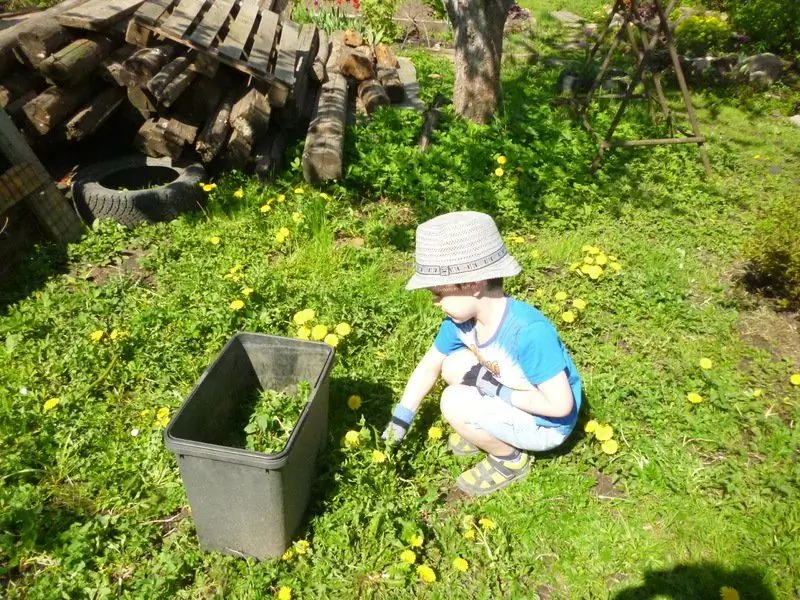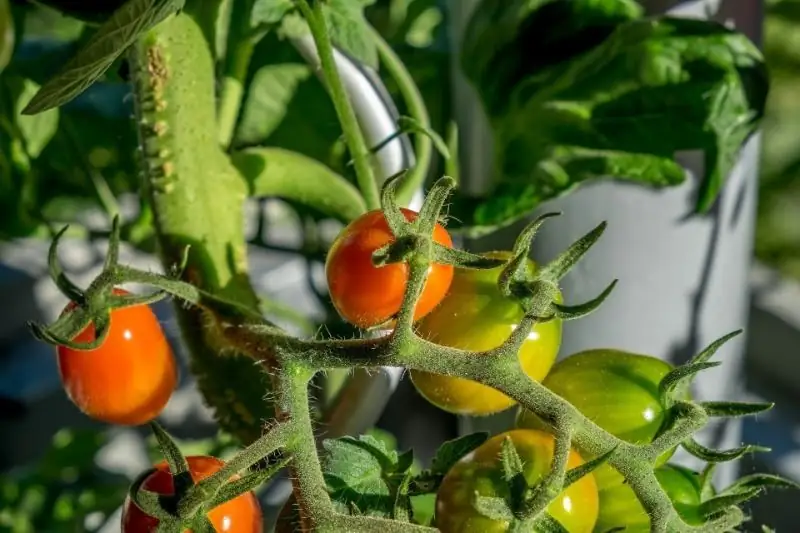
Table of contents:
- Author Bailey Albertson [email protected].
- Public 2023-12-17 12:53.
- Last modified 2025-01-23 12:41.
How to feed zucchini to harvest more neighbors

With proper fertilization, the harvest of vegetables is abundant and of high quality. This also applies to zucchini growing in the open field. Thanks to top dressing, you can harvest more fruits than your neighbors.
Mullein
Zucchini is a vegetable crop that responds well to organic fertilization. In particular, they are fed with cow dung at the stage of planting seeds or seedlings in the garden soil. This fertilizer helps to improve the structure of the soil, saturation with nitrogen, phosphorus, potassium, sulfur, iron and magnesium.
Mullein is introduced when digging the beds, observing the consumption rate of 1 kg of fertilizer per 1 m². Then they start sowing.
You can also add a little organic matter to each hole when planting seedlings.
Boric acid
Experienced summer residents fertilize zucchini with such an affordable pharmaceutical product as boric acid. The use of the drug allows you to stimulate the formation of new ovaries and improve the quality characteristics of the crop. Thanks to the remedy, zucchini are more tasty and beautiful.
Boron is an important nutrient for vegetable crops. With its lack in the soil, the root system and fruiting organs develop poorly. It is necessary for a high yield of a vegetable growing in a garden. The presence of boron in the soil ensures that there are enough vitamins (A, C) and sugars in the squash pulp.
You can feed boric acid as follows:
- soak the seeds in a solution of the medication (2 g per 10 l) of water for 12 hours to stimulate the growth of the culture;
- water the beds before planting zucchini with a solution of the same concentration (consumption rate - 10 liters per 10 m²);
- spray with a solution of boric acid (2 g per 10 l) plants with their incidence.
In the future, the zucchini are fed when watering, applying fertilizer at the root. Spraying foliage should be done in the morning or evening in dry weather. Otherwise, there is a risk of scalding zucchini.
After 1 week after the first feeding, the procedure is carried out again. Watering the vegetable patch will be required regularly to prolong flowering, better formation of the ovary and ripening of fruits. Using a boron-containing solution, you can double the yield.
Ash and grass
A popular natural fertilizer used in the cultivation of many garden crops is ash. It is rich in the nutrients that the squash needs, with the exception of nitrogen. Usually, the addition of ash is supplemented with fertilizing with manure.
Such a folk remedy can replace purchased mineral compounds like superphosphate and potassium chloride. The substance not only saturates the soil with nutrients, but also deoxidizes it, like lime. Ash is also used in the case of the incidence of vegetable crops: with brown spots on the leaves, their yellowing.
Natural fertilizer is used in dry form, and an infusion is also prepared. Experienced summer residents add grass to the ash top dressing.
You will need to fill the container ½ with chopped nettles or bean stalks, add water to the top, leave to ferment for 2 weeks. Then the resulting concentrate is diluted with water in a ratio of 1:10 and ash (50 g) is added to the solution.
Yeast feeding
Yeast is a natural fertilizer for vegetable marrows available to every gardener. Using this product, you can stimulate the activity of soil microorganisms, thereby increasing the nitrogen content in the soil.
By introducing yeast fertilizing, not only the quality of the soil is improved, but also the immunity of plants is increased. Zucchini respond to it by building up green mass and root system. It is desirable to additionally enrich this type of fertilizer with ash.
To prepare a yeast feed, take the following ingredients:
- warm water - 10 liters;
- bakery yeast - 0.4 kg;
- ash - 0.5 kg.
The food product is poured with water, mixed thoroughly, ash is added. Insist in warmth. After the mixture ferments, it is diluted with a bucket of water and the resulting liquid is poured over the vegetable garden.
Weed fertilizer
Weeds that have been weeded out are also applicable as fertilizers. They are rich in potassium, phosphorus, magnesium.
To prepare green dressing, take weeds like nettles and dandelions (without seeds). Fill the barrel with them 1/2, add water to the top, add a little granulated sugar.
Close with a lid. Leave the container warm for 12 days. Its contents must ferment.
After 2 weeks, the concentrate is filtered and diluted with water in a ratio of 1:10. The resulting solution is poured over the garden.
Green fertilizer will prolong the flowering period of the vegetable crop, contribute to the abundant formation of the ovary.
Onion husk infusion

The onion husk contains a lot of vitamins C, E, PP, group B, A, phytoncides. Raw materials are rich in quercetin (antioxidant), useful organic acids, potassium, magnesium, iron, copper, phosphorus, manganese.
The folk remedy has not only nutritional properties, but also disinfecting. It will protect plants from pathogens in the soil, help rid the squash of pests.
To prepare the infusion, you will need 500 g of raw materials, pour 2 liters of water, put on fire and bring to a boil. After the mixture is infused for 3 hours, then filtered through cheesecloth. Water the vegetation with a watering can. Top dressing is carried out both at the root and on the leaf.
Recommended:
Green Fertilizer: How To Prepare Organic Top Dressing From Grass, Including Nettle, Use It Correctly, Reviews

What is green fertilizer, its pros and cons. When, how and what plants can be fed. Instructions for preparation and use. Reviews. Video
How To Care For Strawberries In Spring For A Good Harvest

What are the most important concerns for strawberries in the spring. What to do first and how
How To Feed Cucumbers In The Open Field For An Excellent Harvest, Reviews

How to feed cucumbers outdoors for good growth and abundant fruiting. Mineral and organic fertilizers, folk recipes. Useful video
Corn Pickled Like Cucumbers: Original Harvest With Excellent Taste

How to pickle corn like cucumbers. Delicious corn rolling recipes
7 Misconceptions Of Summer Residents That Prevent Them From Growing A Rich Harvest

What are the common misconceptions of summer residents prevent them from growing a good harvest
